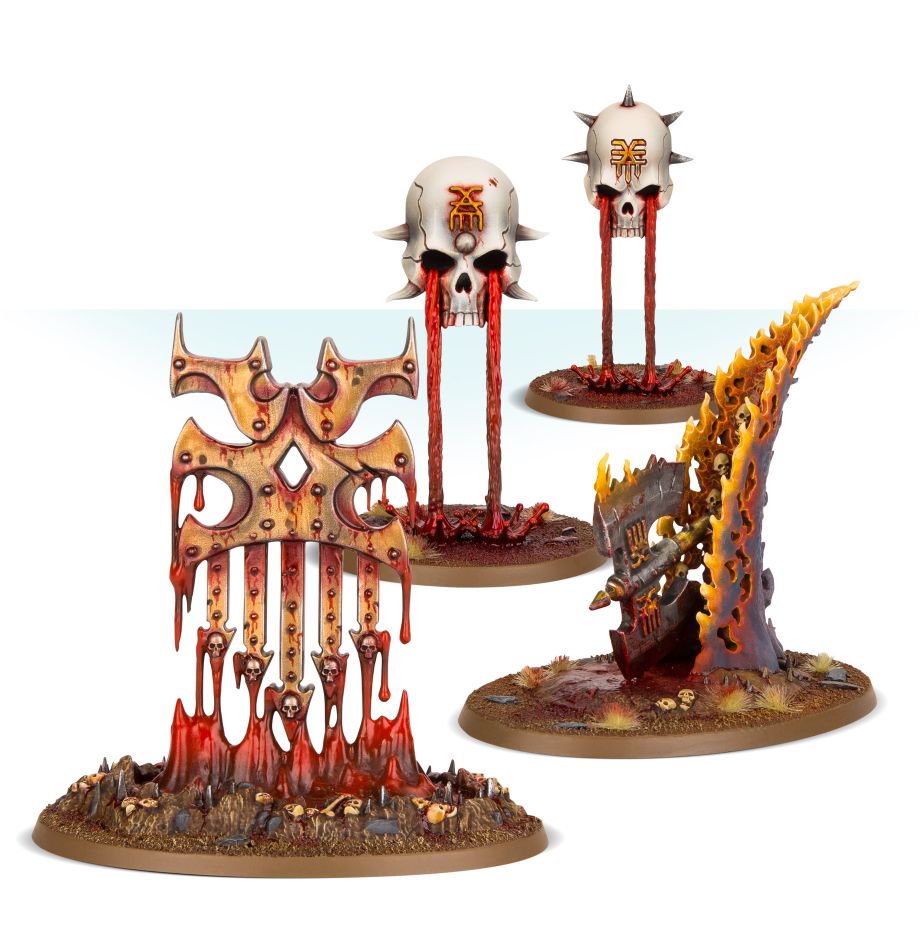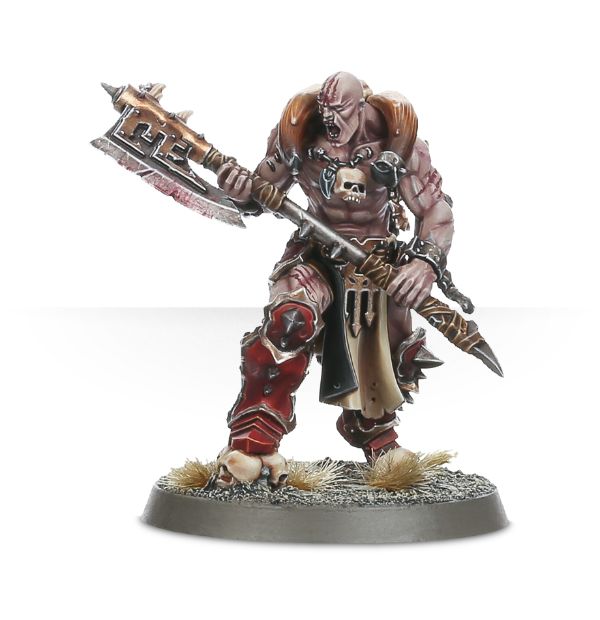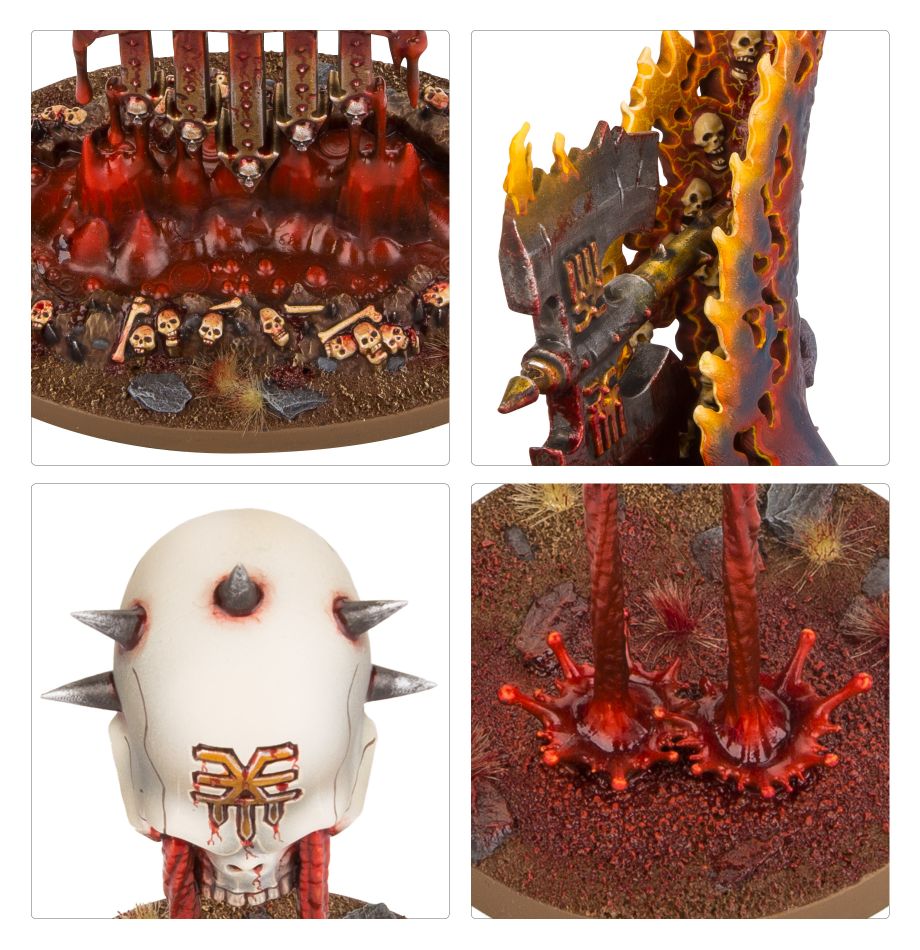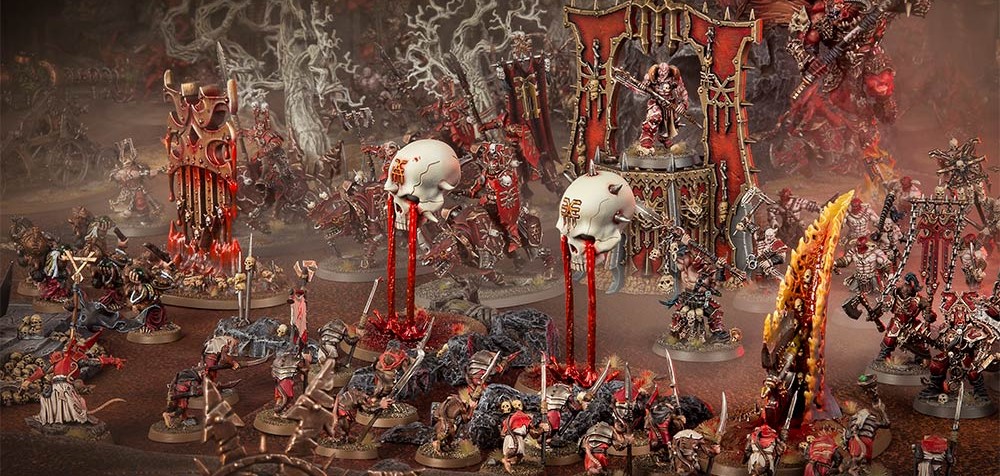Age of Sigmar: Claiming Skulls Using Judgements of Khorne
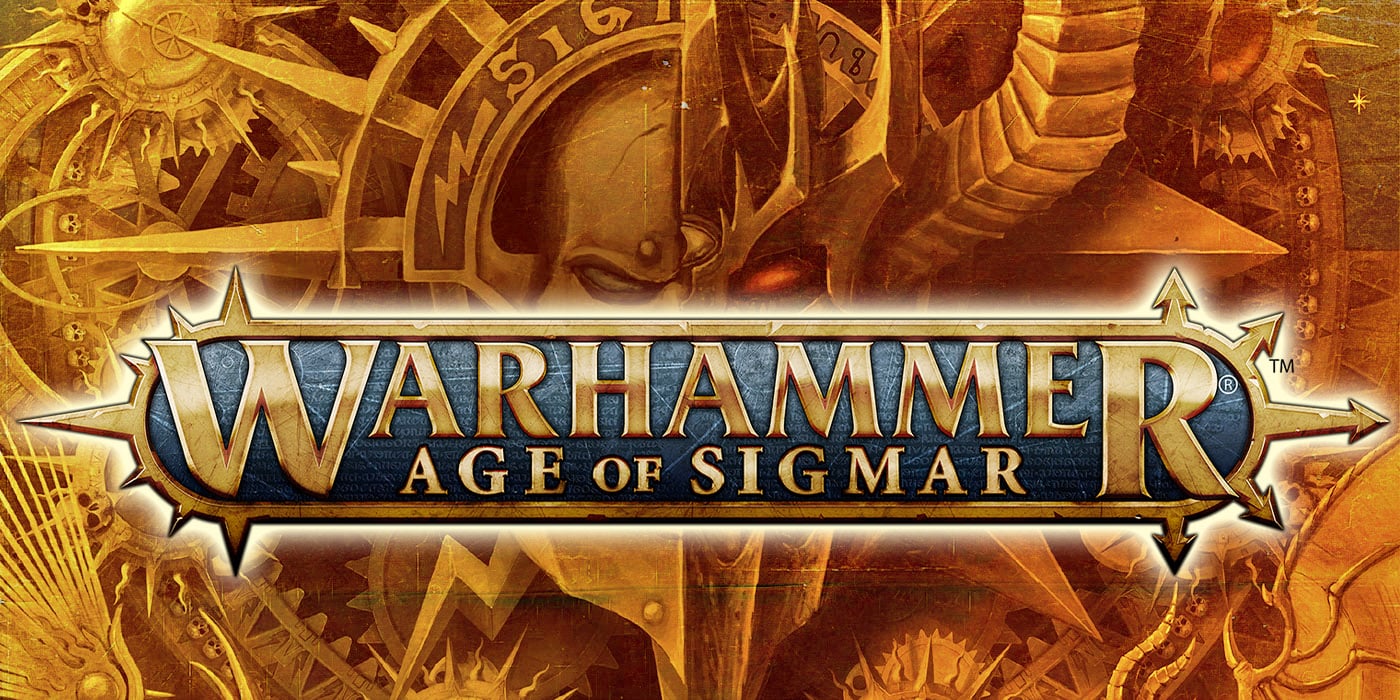

GW needed to release a shiny new Endless Spell kit with the Blades of Khorne release. But how do you release spells for an army that hates all things magical? Simple: you make physical manifestations of Khorne’s anger on the battlefield and call them something metal – like Judgements.
Judgements of Khorne are similar to Endless Spells in that, once summoned, they stay on the field. However, since they are brought on with Prayers from a Slaughterpriest instead of cast, your opponent can’t do anything about them!
Sure they might vanish randomly at the end of the battle round, but if they don’t, your opponent just has to deal with it. In addition, unlike Endless Spells only YOU are allowed to move the Judgments around, regardless of who goes first in the battle round. They are a powerful asset to any Khorne force, and can turn the tide by filling some of the gaps the army has or just laying down more hurt.
Hexgorger Skulls
At 3+, these are the easiest Judgements to summon to the field, and they come as a pair, set up wholly within 8” of a Khorne Priest and within 6” of each other. Once summoned, and every friendly hero phase after, the Skulls can move up to 8” and fly, so long as they end within 6” of each other. True to form with anything Khorne related, these things are an absolute nightmare for enemy Wizards. Any Wizards within 12” of either of the Skulls suffers a -2 to all of their casting rolls, but the rage train doesn’t stop there. If a Wizard attempts to cast a spell while within 12” of BOTH Skulls and the casting roll is an unmodified 8, the attempt immediately fails, the wizard FORGETS THE SPELL, and just to add injury to injury, all wizards within 12” of both models suffer D6 mortal wounds. Legions of Nagash, Sylvaneth, Tzeentch, and other armies that really rely on their magic live in fear of this Judgment, and rightfully so. If you are facing off against one of those, or just want to lay an extra smack on scheming wizards, consider investing in this to deter them. This Judgement is best utilized early in the game to keep Wizards back and deter them from dealing too much damage with their spells. Since it’s a fairly easy Judgement to call, it’s not the end of the world if it vanishes, but having a Slaughterpriest moving up to babysit it isn’t a bad idea either. A well placed Blood Boil prayer after a hit from the mortal wounds, or even just the threat of it, might even make Nagash himself think twice about casting downfield with these guys floating around.
Bleeding Icon
This is the medium level cast Judgement, and under certain circumstances it is the most lethal. It is “cast” on a 4+ Judgement roll, and just like the Skulls must be set up wholly within 8” of a Priest, and then it can fly 8”. Once it moves, every unit the icon passed across, or any unit that is within 1” at the end of the move, suffers D3 mortal wounds. In addition, if a unit fails a battleshock test within 3” of the icon, an additional D3 models flee the battlefield, unless they are Khorne units. This is a great Judgement to cast just ahead of a powerful sweeper unit like Skullreapers that will be dealing a lot of damage when they attack. Use the Icon to deal some initial mortal wounds to the target unit, then charge in your sweeper behind it. Even if they don’t kill it, the Icon will ensure that the already devastating Battleshock the enemy has to take will be even worse, and you can fight with impunity knowing you are immune to its effects. Low Bravery, high model armies like Skaven or Gloomspite Gitz are the perfect targets for this, since they will likely lose several models to battleshock already and 2d3 more each turn will be a nightmare for them.
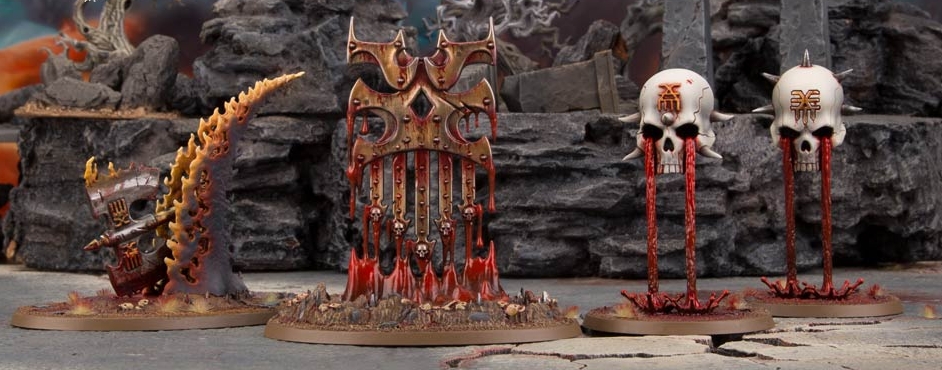 Wrath-Axe
Wrath-Axe
This is the big spell in the book and it has a statline to match, needing a 5+ to cast, which means you’ll want to make sure it can do the work you set it to before you summon it. When you do, however, it can put all kinds of hurt on your opponents. Like all the other Judgements, it must be set up wholly within 8” of a Khorne priest, and can move 8” with fly when it is summoned and in each hero phase. After the model moves, you roll a die for each unit that the axe has passed over, dealing D3 wounds on a 2+. After it has moved, you can pick any unit within 3”, and on a 2+ that unit suffers D6 mortal wounds. At face value this seems like a slightly less reliable Icon, but unlike the Icon the second round of mortal wounds can target one of the units that the axe passed over. This can easily snipe down an enemy character, even a mounted one if you roll high enough. Sure you won’t be killing any monsters in one hit, but you’ll definitely bracket it, possibly twice, and soften it up enough for one of your other units to run in and finish the job. But the fun doesn’t stop there; the axe also dishes out a -1 penalty to hit to all non-Khorne units within 3”. As if the massive damage dump wasn’t enough, making your already beefy Khorne units even tougher to take out is just rubbing salt in the wound. Use this Judgement on low model, high wound units that hit hard, like Stormcast or Ogres, to really get the most out of the damage and hit penalties.
~Which Judgement is your favorite? How will you be using them in your games? Let us know in the comments below!

